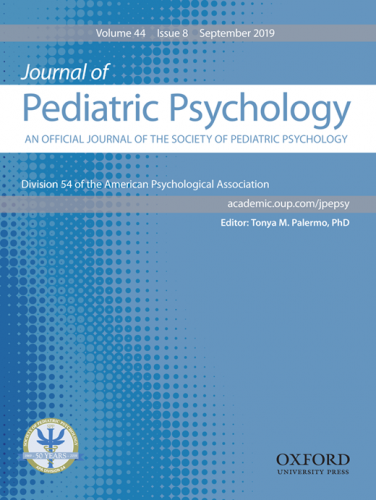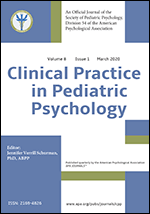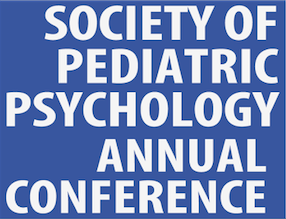Fact Sheet: Differences/Disorder of Sex Development
The process of sex development, in which humans begin to develop male or female reproductive anatomy, starts at about six weeks after conception. Differences/disorders of sex development (DSD) are “congenital conditions in which the development of chromosomal, gonadal, and/or anatomic sex is atypical.”
Prevalence and Course
DSD occur in approximately 1 in 4,500-5,500 births, although prevalence rates vary widely depending upon the specific condition. Many DSD are first detected at birth due to the presence of atypical or ambiguous genitalia. Determining the specific DSD diagnosis is important because some conditions, such as certain forms of congenital adrenal hyperplasia, may be associated with medical problems requiring urgent medical attention. However, most DSD conditions are not life threatening and most do not require urgent medical or surgical intervention. In some cases, healthcare providers and parents must engage in the complex process of deciding on the child’s gender of rearing. Factors such as the specific diagnosis, potential for gonadal function and malignancy risk, fertility potential, the likelihood that the child will be satisfied with their gender of rearing later in life, and the family’s values and concerns must all be considered. Infants or young children born with atypical genitalia may undergo genital surgery to address either urgent or life-threatening medical issues (e.g., if an outlet for urine is blocked or is not present) or non-urgent issues affecting genital function. In some cases, the gonads may need to be monitored due to increased risk of cancer. Gonadectomy (i.e., removing the gonads) may be considered and is another complex decision in which potential for fertility and the individual’s established gender identity should be considered. For some DSD, future gender identity can be more difficult to predict; in these cases, families may be encouraged to postpone gonadectomy or genital surgery until the child is old enough to assert their own gender identity and provide informed assent. Other DSD conditions, such as complete androgen insensitivity syndrome, Klinefelter syndrome, or Turner syndrome, do not result in atypical external genitalia, and are frequently not recognized at birth. Babies born with these conditions are reared in the gender consistent with their genital appearance. Delayed or absent signs of puberty in adolescence may be the first indication that a DSD condition exists; for example, when a girl does not menstruate.
Health and Psychosocial Consequences
DSD can be challenging for affected individuals and their families. Medical information about DSD is not always easy to locate or to understand, and the birth of an infant with atypical genitalia can be confusing and highly distressing for the parents. Caregivers of children with a DSD may wonder how and when to talk with their child or with others about their child’s diagnosis. Individuals with a DSD, whether diagnosed at birth or later in development, may experience feelings of stigma, isolation, shame, anger, or depression. Most individuals born with DSD are satisfied living in their assigned gender, as are most people born without DSD; however, individuals with DSD are more likely to experience gender dysphoria, a deep and sustained dissatisfaction with their assigned gender. The prevalence of gender dysphoria among individuals with DSD varies significantly from one condition to another, but factors accounting for variability remain unclear. Some limited research has reported elevated rates of internalizing problems among individuals with DSD. Pediatric psychologists should also assess for and provide support around these concerns.
Evidence-based Assessment
Due to the complex and sensitive nature of the issues surrounding DSD care, referral to a specialized center is strongly encouraged. Ideally, such centers support an interdisciplinary team of providers, including (among others) endocrinology, urology/gynecology, genetics, and psychology. Pediatric psychologists may complete an assessment of the psychosocial needs of the caregivers and/or patient, as developmentally appropriate. Potential domains of assessment include family functioning, support systems, caregivers’ emotional well-being, and the child’s psychosocial adaptation, self-perceptions (including body image), and perceived gender typicality and contentedness.
Culture, Diversity, Demographic and Developmental Factors
Psychologists working with children and families affected by DSD conditions must be knowledgeable regarding issues related to sexuality, gender identity, and gender expression, and be comfortable counseling families in these areas. For example, individuals unfamiliar with these topics may confuse the issues surrounding gender identity in DSD with those present for transgender individuals. Transgender identity characteristically occurs in individuals whose chromosomal, gonadal, and/or anatomic sex are typical, yet their gender identity does not correspond with the gender in which they were reared from birth. In DSD, individuals often make a distinction between their identity and their medical condition (i.e., their DSD is not part of their identity); others with a DSD have adopted an “intersex” identity. It is also important to distinguish gender identity from gender-role behavior (the degree to which a person’s behavior fits with stereotypical expectations for their gender). For example, young girls with “classic” congenital adrenal hyperplasia (CAH) may prefer activities that are more typically thought of as “masculine,” such as playing with cars or tools, rough and tumble play, or preferring boy playmates, compared to girls without CAH, yet unambiguously identify as girls. Families who are uncomfortable or unfamiliar with these topics may need additional assistance in supporting their child.
Evidence-based Interventions
Despite limited evidence-based psychosocial interventions for children with DSD and their families, expert opinion suggests that a pediatric psychologist, or other behavioral health provider experienced in DSD, be available to support caregivers as they manage the range of emotions that may accompany a new DSD diagnosis. Psychologists may also provide guidance regarding complex issues, such as medical and surgical decision making and how to educate the child (and significant others) about the medical condition. Education of the child should begin early and in a developmentally sensitive and iterative manner; psychologists can help parents determine how best to share information. Psychologists may also work with families and patients to ensure that they are supported in any exploration of gender identity that may occur and/or help normalize the experience of gender “nonconforming” preferences or behaviors. As is the case for other chronic medical conditions, individuals with DSD and their families may benefit from peer support groups.
Resources
Authors: Members of the DSD Special Interest Group
Date of last update: December 2019
References
- Bakula, D.M., Sharkey, C.M., Wolfe-Christensen, C., Mullins, A.J., Meyer, J., Mullins, L.L., & Wisniewski, A.B. (2017). Recommendations for the establishment of disorders/differences of sex development interdisciplinary care clinics for youth. Journal of Pediatric Nursing, 37, 79-85. doi: 10.1016/j.pedn.2017.08.032
- Callens, N., Gardner, M., & Sandberg, D. E. (2017). Disorders/differences of sex development. In M. C. Roberts & R. G. Steele (Eds.), Handbook of pediatric psychology (5th ed., pp. 632-642). New York, NY: The Guilford Press.
- Ernst, M.M., Liao, L., Baratz, A.B., & Sandberg, D.E. (2018). Disorders of sex development/intersex: Gaps in psychosocial care for children. Pediatrics, 142(2), e20174045. doi: 10.1542/peds.2017-4045.
- Lee, P. A., Houk, C. P., Ahmed, S. F., Hughes, I. A., & in collaboration with the participants in the International Consensus Conference on Intersex organized by the Lawson Wilkins Pediatric Endocrine Society and the European Society for Paediatric Endocrinology. (2006). Consensus statement on management of intersex disorders. Pediatrics, 118(2), e488-500. doi:10.1542/peds.2006-0738
- Lee, P.A., Nordenstrom, A., Houk, C.P., Ahmed, S.F., Auchus, R., Baratz, A., ... Global DSD Update Consortium. (2016). Global disorders of sex development update since 2006: perceptions, approach and care. Hormone Research in Paediatrics, 85(3), 158–180. doi:10.1159/000442975
- Sandberg D.E., Gardner M., Callens N., Mazur T., the DSD-TRN Psychosocial Workgroup, the DSDTRN Advocacy Advisory Network, & Accord Alliance. (2017) Interdisciplinary care in disorders/differences of sex development (DSD): The psychosocial component of the DSD—Translational research network. (2017). American Journal of Medical Genetics Part C, Seminars in Medical Genetics, 175(2), :279–292. doi: 10.1002/ajmg.c.31561



